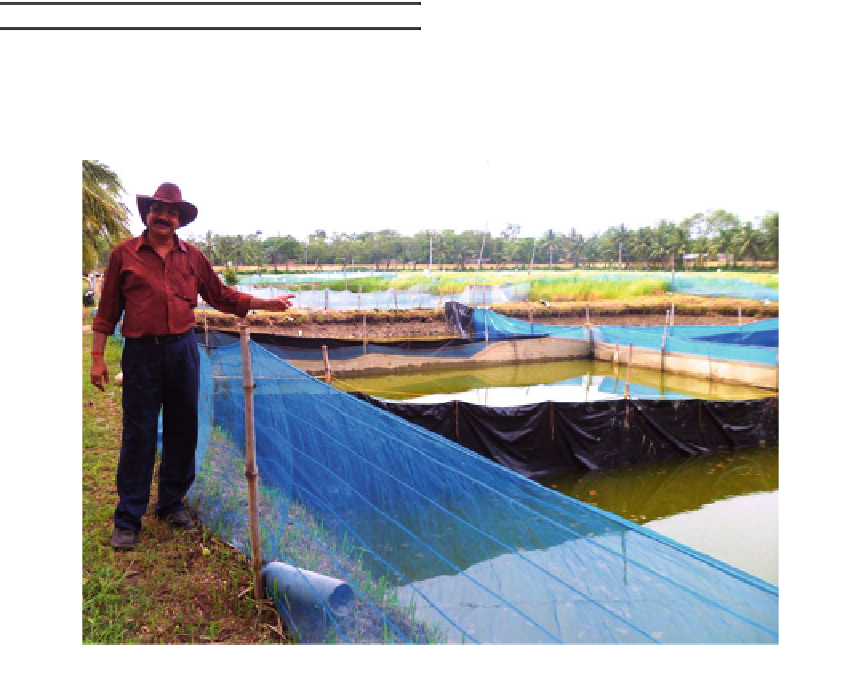Environmental Engineering Reference
In-Depth Information
Table 7.12
Nutrient concentrations and AGB of P. co-
arctata in the western, central and eastern Indian Sun-
darbans during April 2013
Variable
waste released from shrimp farms and these
activities are much more pronounced in the
western sector compared to the central and
eastern sectors. The highest AGB values of
Western
Central
Eastern
P.
Nitrate (
µ
gat/l)
29.85
23.40
16.23
coarctata
in the eastern sector coincide with the
lowest nutrient concentration in the ambient
water, and this is due to minimum intervention of
human in this sector owing to the location of this
sector in the Reserve Forest Area. Projected
increase in nitrogen
Phosphate (
µ
gat/l)
3.14
1.88
0.69
Biomass (gm/m
2
)
194.63
201.10
227.53
Table 7.13
Nutrient concentrations and AGB of
P. co-
ux to the coast, related to
feed an expanding human population, may rap-
idly result in a coastal landscape with less marsh,
which would reduce the capacity of coastal
region to provide important ecological and eco-
nomic services (Deegan et al.
2012
).
We also observed a local level damage to blue
carbon (preferably saplings and seedlings of
mangroves) by prawn seed collectors of
Indian Sundarbans. At present, the major envi-
ronmental-cum-socioeconomic issue in this
mangrove ecosystem is the proliferation of the
tiger prawn or shrimp (
fl
arctata
in the western, central and eastern Indian Sun-
darbans during September 2013
Variable
Western
Central
Eastern
Nitrate (
µ
gat/l)
33.78
27.13
20.38
Phosphate (
µ
gat/l)
3.98
2.02
1.04
Biomass (gm/m
2
)
187.55
198.33
205.85
Table 7.14
Nutrient
concentrations
and AGB of
P. coarctata
in the western, central and eastern Indian
Sundarbans during November 2013
Variable
Western
Central
Eastern
Nitrate (
µ
gat/l)
31.66
25.50
18.59
Penaeus monodon
) farms
gat/l) 3.70 1.96 0.93
Biomass (gm/m
2
) 190.65 ND ND
ND means Not Done as the authors could not collect the
sample because of
Phosphate (
µ
(Fig.
7.44
).
In the absence of shrimp hatchery in the entire
region, the supply of tiger prawn seeds to these
farms is done through the wild collection from the
tiger straying from the adjacent
Reserve Forest
Fig. 7.44
Shrimp farms in Indian Sundarbans: a major threat to mangrove ecosystem












